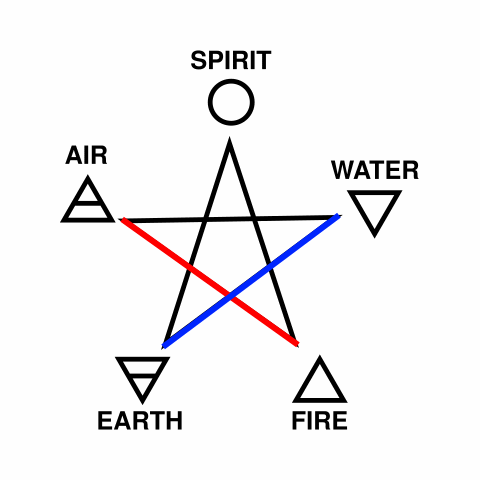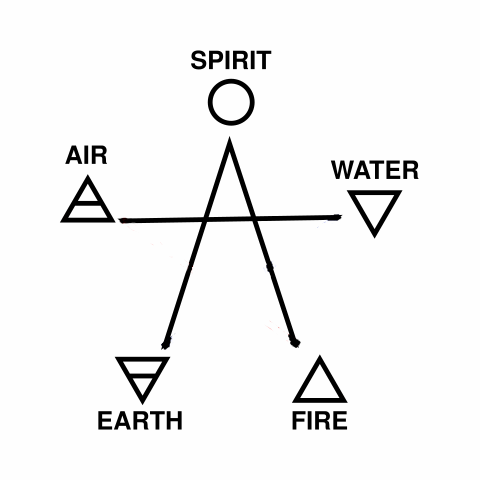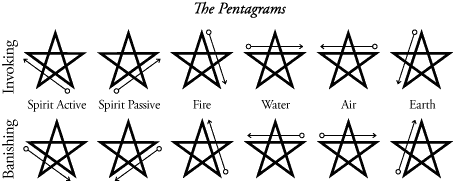Demystifying the paths of the pentagram
Ever wonder why the directions to trace the pentagrams in the ritual of the pentagram are the way they are? It bothered me for a long time as they don’t follow the normal clockwise/ccw to invoke/banish mechanics, but the key isn’t that elusive. You just have to forget a few things first.
Clockwise/deosil and Counter-clockwise/widdershins are simply not relevant in the tracing. And the spirit point is not used to invoke or banish spirit. Trying to force those concepts into the ritual is where the confusion lies.
The source I’m using here is Liber O by Crowley, but there are other sources with the same information. The key is starting with the equilibriating pentagrams of spirit. Each of these is the connecting path between the active or passive element points, from Fire to Air (active), and from Earth to Water (Passive). They’re used in both directions, depending on if you’re banishing or invoking. Moving upwards from the bottom point is invoking in either case.

Once we’ve defined those two paths, since they’re being used as both incoming and outgoing paths, they can’t be used for any other element. So we have this left:

Now, if you look at what’s left, there’s only one path connected to each of the other 4 elements. Since we can’t apply clockwise/counterclockwise rules to these in any consistent way, the method is to draw towards the point to invoke, and to start at the point and draw outward to banish. You just follow the only path available to that element after removing the two spirit paths. Water and Air do share a path from opposite ends, but that works because that is the next transition, Air condenses to Water, Water ascends to Air.
And applying the rules as I’ve described, here is the result as in Liber O.

Love is the Law, Love under Will.
![]()